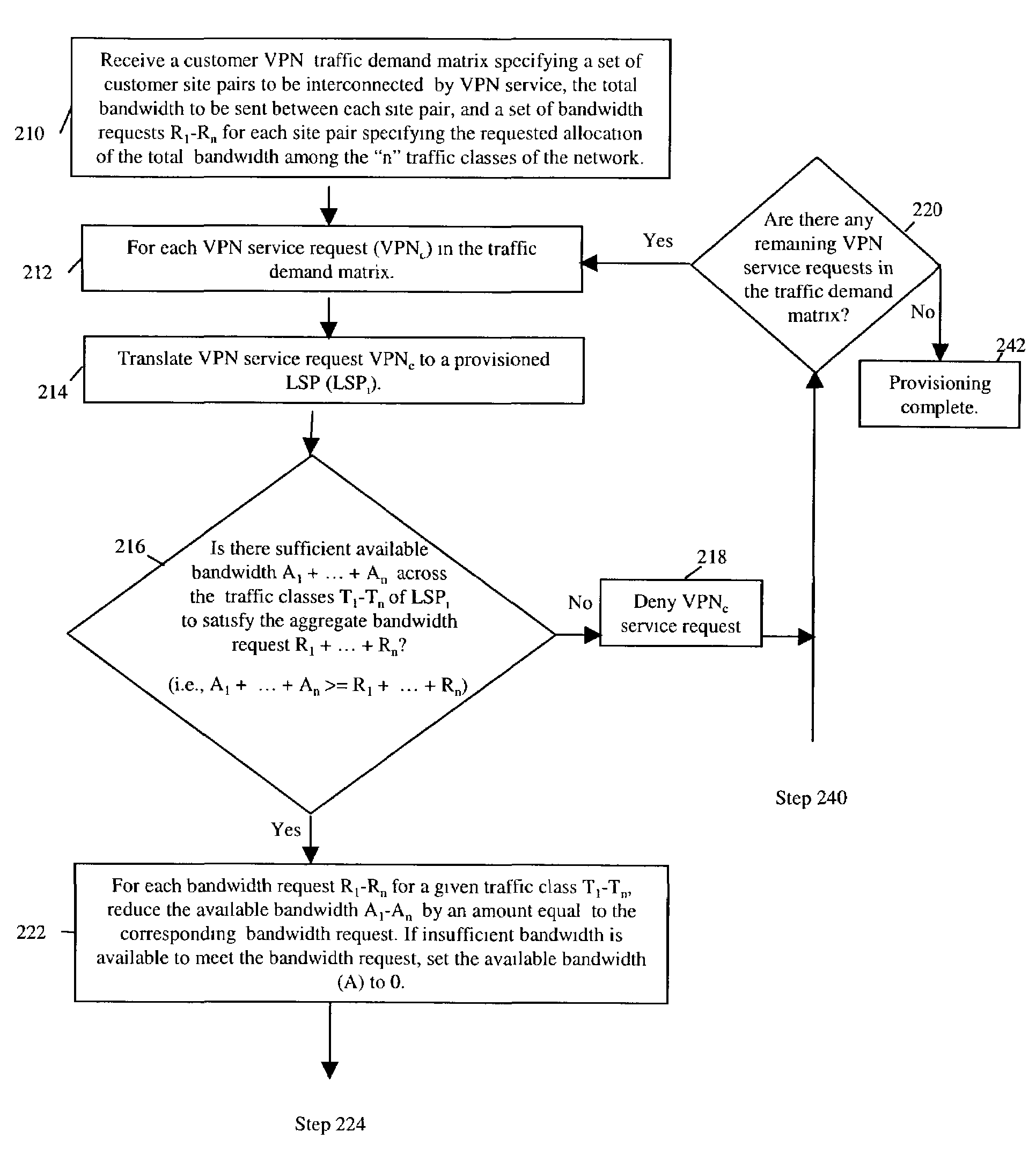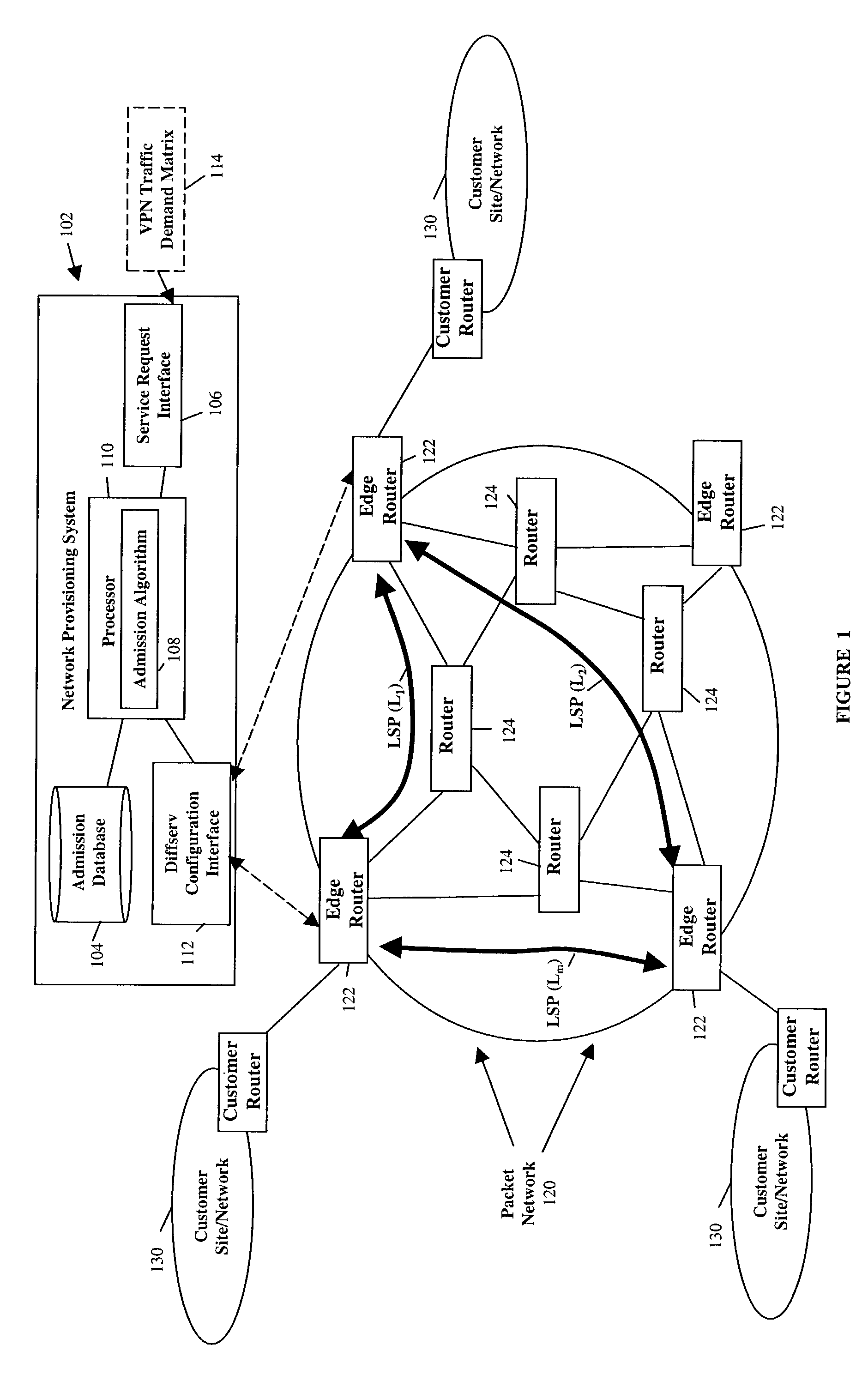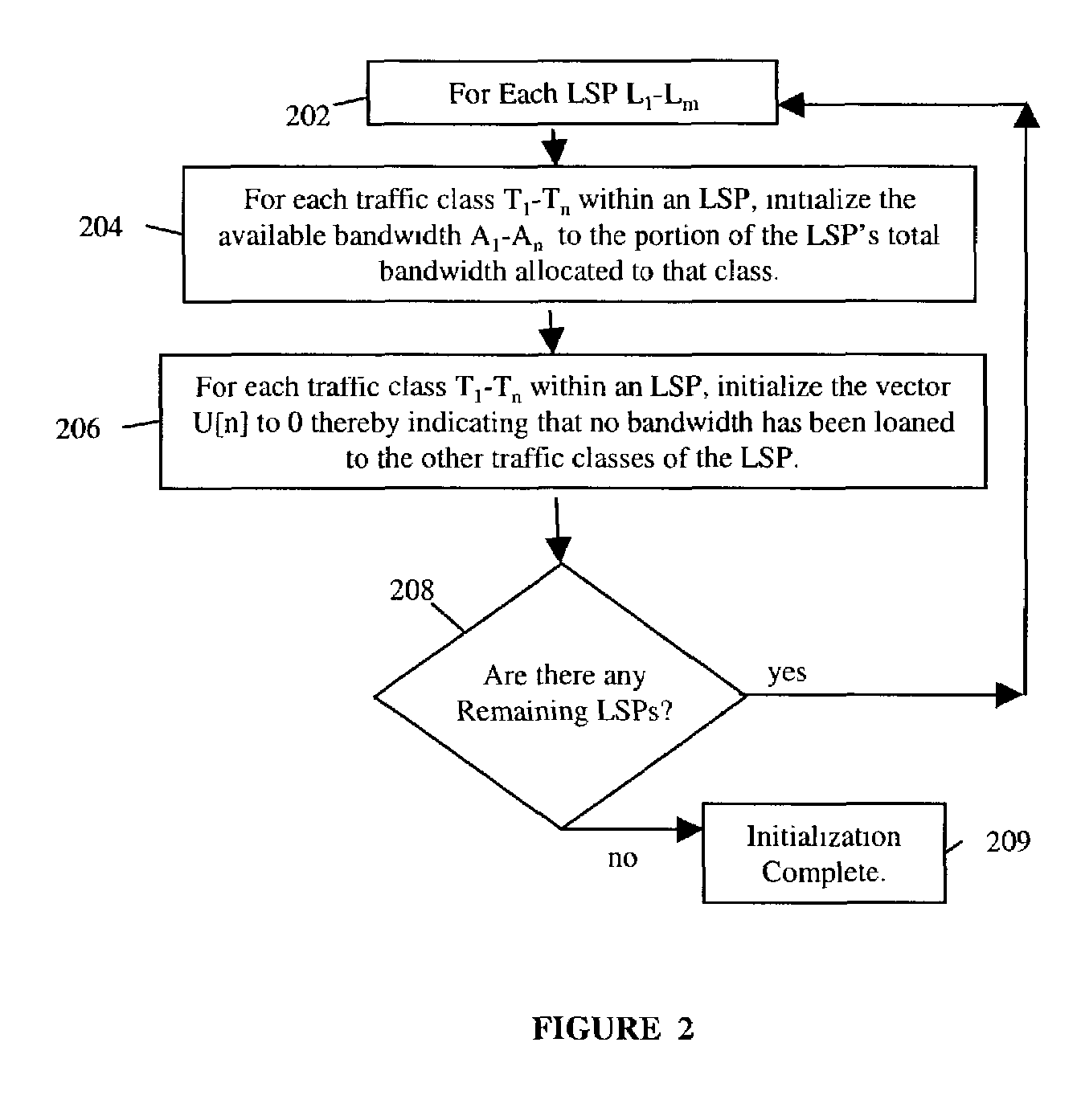Dynamic bandwidth reallocation
a bandwidth reallocation and dynamic technology, applied in the field of packet network, to achieve the effect of improving network utilization, increasing the number of new service requests admitted, and not affecting the quality of service (delay and packet loss
- Summary
- Abstract
- Description
- Claims
- Application Information
AI Technical Summary
Benefits of technology
Problems solved by technology
Method used
Image
Examples
first embodiment
[0026]Reference will now be made to our inventive method for dynamically reallocating network bandwidth between the traffic classes of a path in order to admit a new service request, this first embodiment being shown in the flow diagrams of FIGS. 2, 3, and 4 and as performed by processor 110 through the execution of admission algorithm 108. In this first embodiment, any traffic class within an LSP can borrow bandwidth from any other traffic class within the same LSP. Beginning with FIG. 2, steps 202-208 show the initialization of variables for each LSP, L1-Lm, in the network. Specifically, in step 204 the available bandwidth A1-An for each traffic class T1-Tn in each LSP L1-Lm is set to the corresponding traffic classes' allocated portion of the total LSP bandwidth thereby indicating that all bandwidth within a traffic class is available for allocation to customer VPN service requests. As indicated above, each traffic class T1-Tn within an LSP L1-Lm also has a corresponding vector U...
PUM
 Login to View More
Login to View More Abstract
Description
Claims
Application Information
 Login to View More
Login to View More - R&D
- Intellectual Property
- Life Sciences
- Materials
- Tech Scout
- Unparalleled Data Quality
- Higher Quality Content
- 60% Fewer Hallucinations
Browse by: Latest US Patents, China's latest patents, Technical Efficacy Thesaurus, Application Domain, Technology Topic, Popular Technical Reports.
© 2025 PatSnap. All rights reserved.Legal|Privacy policy|Modern Slavery Act Transparency Statement|Sitemap|About US| Contact US: help@patsnap.com



